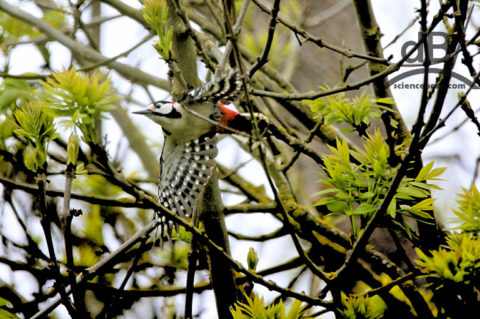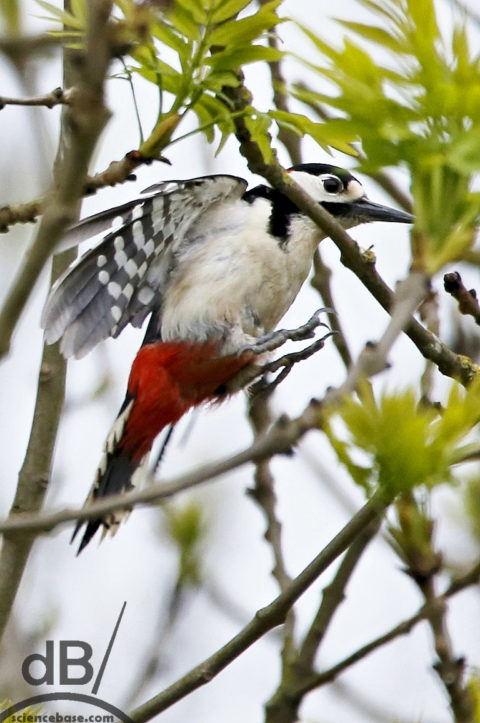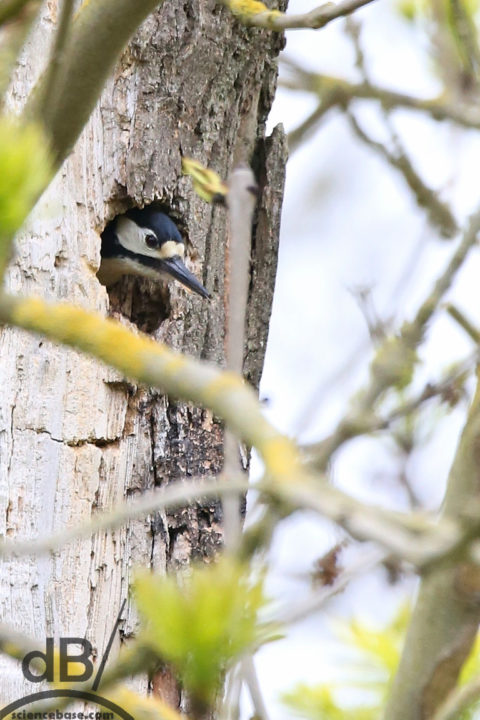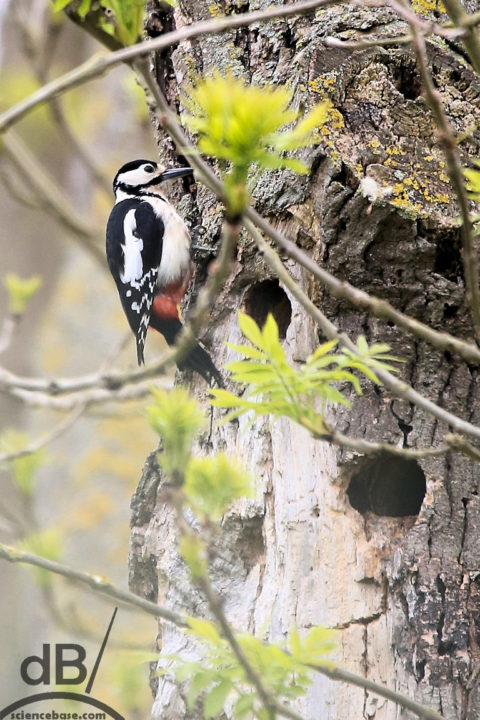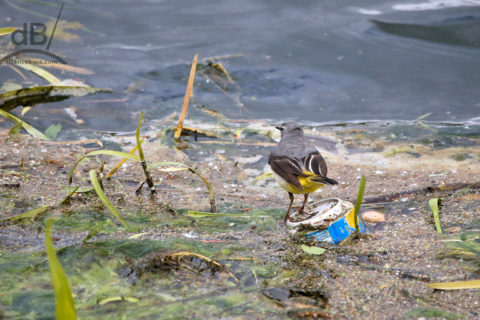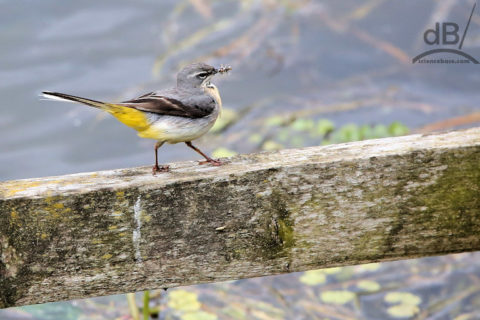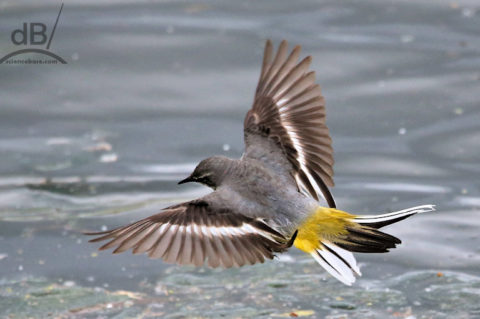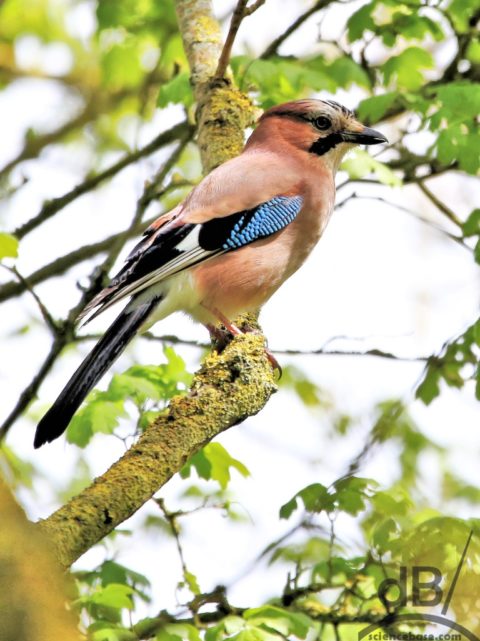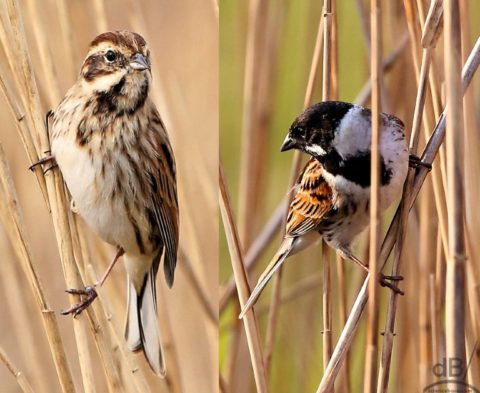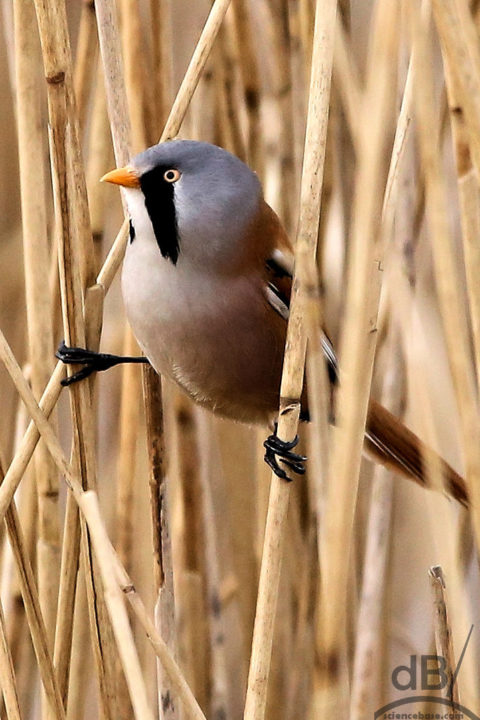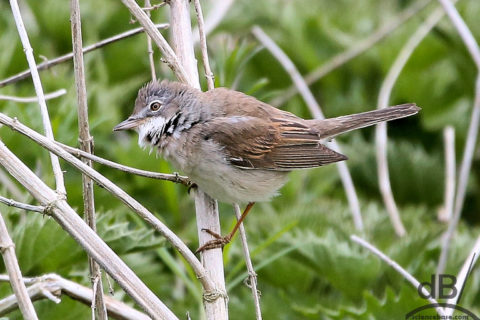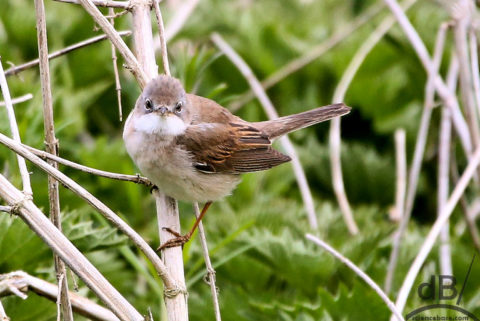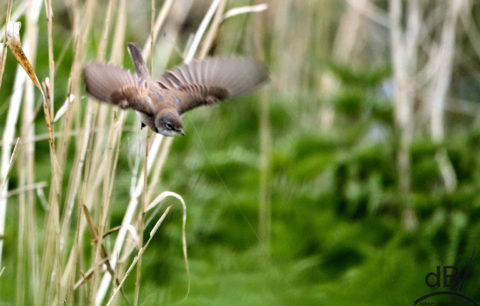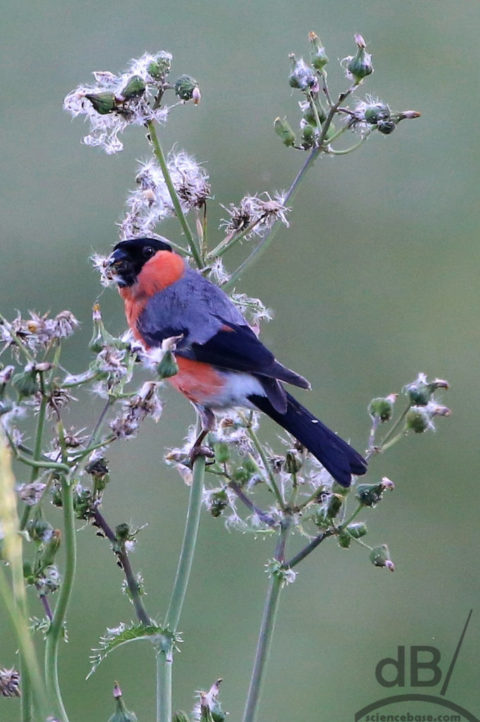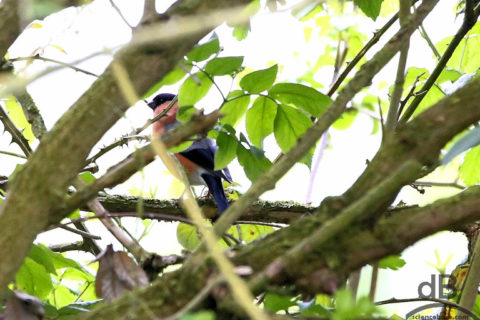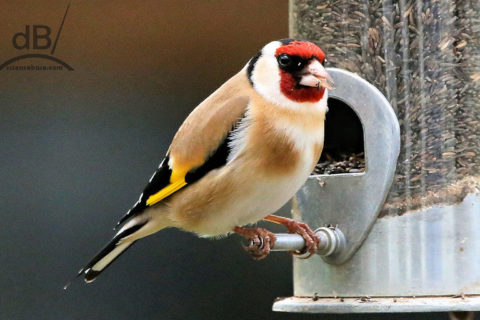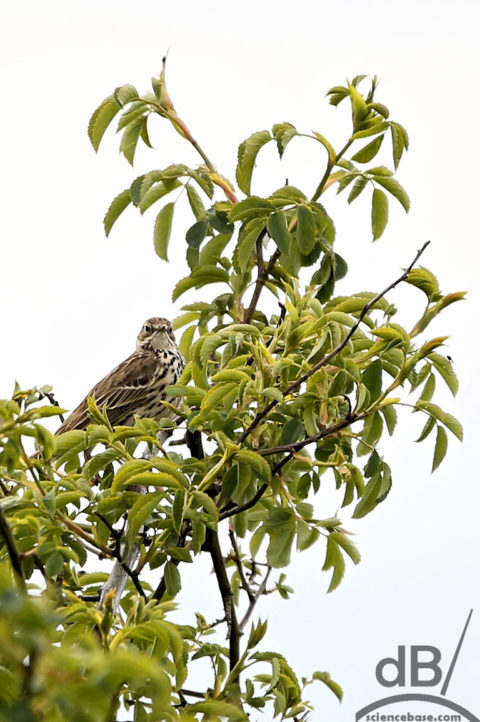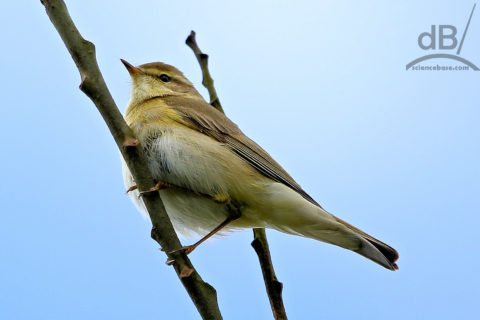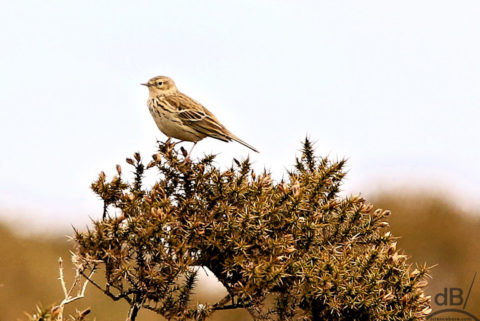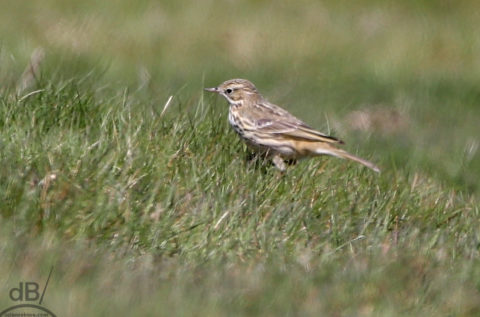Earlier in the year, I snapped and blogged about the great spotted woodpecker (Dendrocopos major) in local woodland. Recently, there has been a lot more activity and there are at least two pairs around. I suspected one pair was using a dead tree with lots of big holes in its trunk and by chance spotted one bird clambering up towards one of those holes before disappearing inside. It emerged a few seconds later after peering cautiously from the hole before darting across the field and beyond the tall hedgerow, presumably in search of more food for its chicks. Meanwhile parent two arrived a few moments later, at some times the pair were both in attendance.
